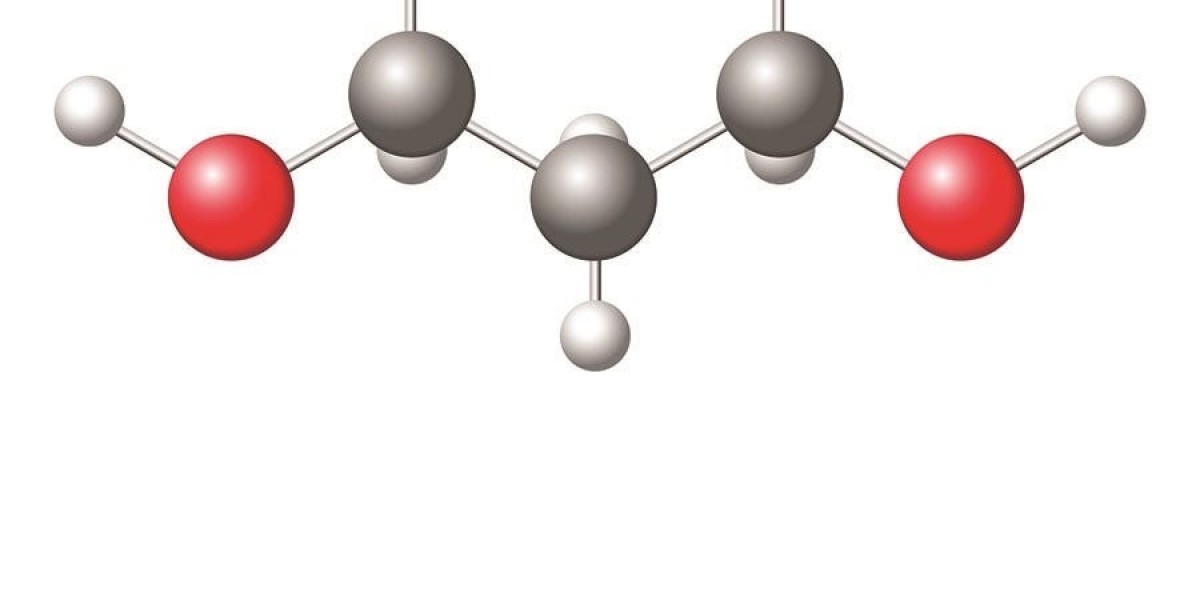What is 1,3 Propanediol?
1,3 Propanediol, also known as trimethylene glycol or PDO, is a colorless, odorless, and low-volatility organic compound that belongs to the family of polyhydric alcohols. PDO is a three-carbon molecule that contains two hydroxyl groups. Chemically, its formula is C3H8O2. Some key properties of PDO include high boiling point, low freezing point, good solvent capability, and stability at high temperatures. These properties make PDO suitable for use in a variety of applications. The Global Production of 1,3 Propanediol, also known as trimethylene glycol or PDO, is a colorless alcohol compound that has a variety of industrial uses. It is mainly produced through the fermentation of plant-based sugars such as corn sugar or sugarcane. 1,3 dihydroxypropane has three carbon atoms and two hydroxyl functional groups, giving it the formula C3H8O2. This simple structure allows it to be utilized in many applications.
Major Applications of 1,3 dihydroxypropane
PDO finds widespread application in the production of polyesters and polyurethanes. It can be polymerized into polytrimethylene terephthalate (PTT), which is a strong, stretchy, and breathable fiber used to make carpets and apparel. PDO is also used to produce polytrimethylene ether glycol (PTMEG), an elastomer used in spandex fibers, coatings, and thermoplastic polyurethane (TPU) elastomers. Other applications of PDO include deicing fluids, cosmetics, electronics, and solvents. Its non-toxic and biodegradable nature has led to increasing use of PDO in personal care products like soaps, lotions, and toothpastes.
Global Production Trends of 1,3 dihydroxypropane
The global demand for PDO has been steadily rising driven by its wide range of applications across industries. According to estimates, the global PDO was valued at $450 million in 2019 and is projected to grow at a CAGR of over 6% between 2020-2026. Regionally, Asia Pacific currently dominates the global PDO production capacity with China as the leader. In 2019, China accounted for over 50% of the total global PDO output. Other major producers include South Korea, Japan, India and Thailand in Asia and Brazil in South America. In Europe, production capacities are concentrated in Germany and Italy.
The United States produces PDO domestically while also importing it from China and Belgium. In recent years, overall global PDO production capacities have increased significantly with Chinese manufacturers ramping up additional plants. For instance, in 2020, China added two new PDO production units with total annual capacities of 100,000 metric tons each. South Korean manufacturer SK Global Chemical is also expanding its PDO facilities. Such capacity additions are expected to meet the surging worldwide demand for polyurethane elastomers, PTT, and other PDO-based derivatives over the coming years.
China Dominates Global PDO Supply
China has firmly established itself as the dominant global supplier as well as consumer of 1,3 dihydroxypropane in the past decade. Chinese producers including Shanxi Sanwei, SK Innovation, Glory Sky and Hefei TNJ enjoy the benefits of access to raw materials, cheap labor, and home advantage. The combined annual PDO production capacity of Chinese manufacturers stands at over 500,000 metric tons currently. This volume represents approximately 60% of the Asia Pacific and 35% of the global PDO output. Chinese PDO is extensively exported to major s in Japan, South Korea, Europe, the U.S. and Brazil due to competitive pricing.
However, the dependence of global PDO supply on China has raised concerns about supply security and price volatility risks. This has prompted other countries to boost domestic production capacities to reduce reliance. For example, South Korea's SK Global Chemical aims to self-supply over 70% of the country's PDO requirements through ongoing capacity expansions. In Europe, Italy's Mossi & Ghisolfi is working on greenfield PDO projects while strengthening trade ties with Asian partners like Thailand. Additionally, some U.S. companies are exploring commercial production through new bio-based routes to diversify supply sources for PDO.
Growing Relevance of Green Production Methods
With rising environmental awareness, efforts are underway globally to develop more sustainable production methods for 1,3 dihydroxypropane. Currently, PDO is commercially manufactured through chemical synthesis using propylene oxide as the raw material. However, this fossil fuel-based process has high carbon footprint. Alternatively, bio-based routes are gaining prominence. Notable examples include fermentation of sugary or starchy feedstocks by genetically modified bacteria or yeasts to produce PDO. Leading these developments are U.S. firms such as Genomatica, Global Bioenergies and BioAmber which have successfully demonstrated advanced bio-PDO production at pilot scales.
Aopting biological routes can help lower lifecycle greenhouse gas emissions for PDO by around 80-90% compared to conventional methods. Yet commercialization challenges remain around achieving competitive production costs and ensuring stable supply of feedstocks. Government incentives and robust offtake agreements will be important enablers. Nonetheless, biotechnology approaches represent the future and many developers target commercial launch of first bio-PDO plants by 2025 globally. The availability of greener PDO can open up newer sustainable applications while boosting overall demand for the chemical in the coming decades.
Get more insights: Global 1, 3 Propanediol
For More Insights Discover the Report In language that Resonates with you
About Author:
Vaagisha brings over three years of expertise as a content editor in the market research domain. Originally a creative writer, she discovered her passion for editing, combining her flair for writing with a meticulous eye for detail. Her ability to craft and refine compelling content makes her an invaluable asset in delivering polished and engaging write-ups.
(LinkedIn: https://www.linkedin.com/in/vaagisha-singh-8080b91)



